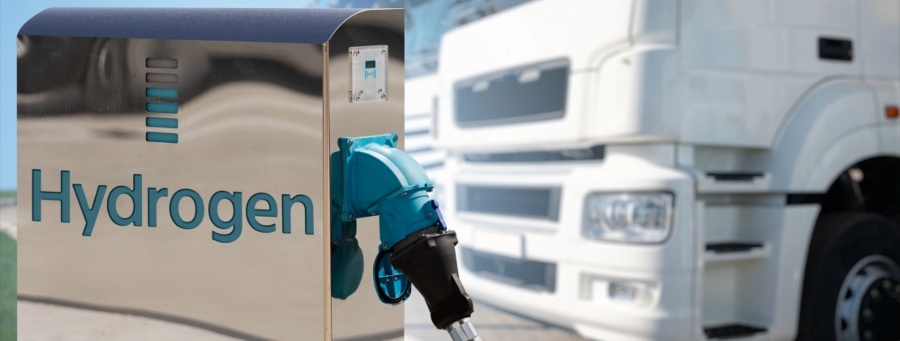
At Umicore, we believe fuel cell electric vehicles are part of the way forward for cleaner mobility. That is why we have been working hard on developing Proton Exchange Membrane (PEM) fuel cell catalysts, doing our part to lead the charge. Now, we want to do more: we also want to spread the word about their technology benefits in a series of 6 episodes on fuel cells.
In episode 3: Fuel cell technology: 5 reasons why.
- Sustainability
- Reliability
- Versatility
- Efficiency
- Scalability
Sustainability: zero harmful emissions
As a society, we need to move away from fossil fuels. More and more governments are defining legislation to limit emissions and stimulate alternative energy sources. The outcome: an increasing number of companies are embracing fuel cell technology as an alternative, particularly in the transport and automotive industry.
The cleanest fuel for fuel cells out there? Green hydrogen. It is produced by splitting water through electrolysis. The electrolysis process itself is powered by renewable energy sources, such as wind or solar energy and has no negative impact. To sum up, fuel cells fueled with green hydrogen only produce water, power and heat as by-products. In other words, zero harmful emissions.
Reliability: abundantly available and high performing
Hydrogen is the simplest and most abundant substance today and we sometimes forget how useful hydrogen can be. A as an energy carrier. it can store and deliver a tremendous amount of energy, thus a highly suitable fuel for fuel cells.
Moreover, hydrogen fuel cells operate at relatively low temperatures, which improves their durability, and the quality of the generated power doesn’t degrade over time. On top of that, they have been successfully tested in the toughest conditions, extreme cold or heat, storms and hurricanes. It is no surprise that companies look at this technology for backup power purposes as fuel cells allow you to go off grid.
Versatility: suitable for a range of cost-effective (mobility) applications
Fuel cells are genuine allrounders. They can be used in laptops, but might just as well provide stable energy grids in remote areas. The true value for now, however, lies in large-scale clean mobility. Think trains, heavy-duty trucks, ferries, forklifts, buses, personal vehicles and much more. For all these applications, fuel cell technology has become an interesting alternative.
Moreover, fuel cells eliminate the need to charge and manage batteries. The light-weight units also run longer than most batteries and are quickly refueled, reducing downtime. Their high reliability, on the other hand, drastically reduces maintenance costs. As hydrogen production and distribution will further scale up, the costs will only go down.
Efficiency: leaving classic combustion in the rear-view mirror
On average, conventional power plants produce electricity at efficiency rates between 30 and 40%, with ‘real efficiency’ much lower due to transmission and distribution losses. Hydrogen fuels cells in production, on the other hand, are about 50 to 60% energy efficient. And that can increase to about 80% when used in conjunction with heat recovery.
In cars, it is the same story. A typical internal combustion engine is only 25% energy efficient, while the figure for fuel cells stands at 60%. When compared to batteries in electrical vehicles (EVs), the picture is more nuanced. Fuel cell electric vehicles require twice as much energy to cover the same distance. However, the longer the route and the larger the payload, the more interesting hydrogen becomes. The heavy batteries in EVs affect their energy efficiency, and refueling hydrogen goes much quicker than charging a battery.
Scalability: paying only for what you need
A single fuel cell produces roughly 0.5 to 1 volt, barely enough for even the smallest applications. To achieve higher voltages, fuel cells are joined in series to form layered stacks. Depending on the application, a fuel cell stack can contain hundreds of individual fuel cells. In other words, you can engineer them to precisely meet your power needs.
This scalability makes PEM fuel cells ideal for transportation. They are as compact and light as possible. By eliminating all auxiliary components, fuel cells also become more efficient and cost-effective. No doubt, further technological advancements will add to the appeal of this innovative technology.
Read the most up to date Fuel Cell and Hydrogen Industry news at FuelCellsWorks




